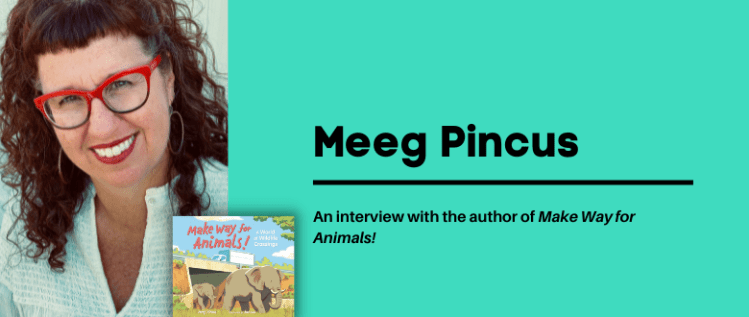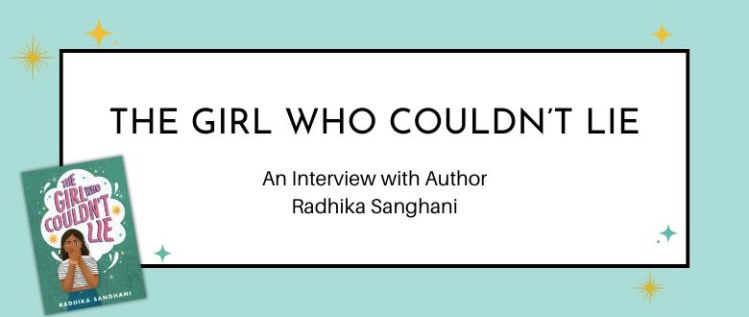Make Way for Animals!: An Author Interview with Meeg Pincus

Around the world, roads and highways have cut through natural spaces. As a result, wild animals are cut off from the resources they need to survive. Make Way for Animals!: A World of Wildlife Crossings explores the creative solutions engineers and wildlife biologists have found to save both animal and human lives and help preserve ecosystems.
Today author Meeg Pincus joins us to share her inspiration for this nonfiction picture book, her research process, and more!
Q: What inspired you to write this book?
A: I’m always seeking stories of real-life “solutionaries” who help solve problems for people, animals, and the planet. (Solutionary is a term from humane education, a field I’ve done some training and teaching in.) I get a lot of nature magazines, and I read an article in one several years back about wildlife crossings—it seemed like such a solutionary concept! So, I began researching wildlife crossings around the globe. I had to do a lot of digging—since then, it’s become much easier to find information about them, which is great. I discovered so many fascinating kinds of crossings, all around the world, and I just knew kids would find them as cool and inspiring as I did.
Q: Was there anything that really surprised you in your research?
A: Honestly, I couldn’t believe how many different kinds of animals use wildlife crossings in so many different places. Tiny penguins in New Zealand?! Millions of migrating crabs on an island in the Indian Ocean?! And on and on. I just found it all surprising, really, as it was new to me. Then, I learned that my own neighborhood in San Diego, where my family has lived for 17 years, sits right next to a wildlife corridor (a protected natural space for crossing animals). It was right out my window all this time!
Q: What do you hope kids take away from this book?
A: I’d love spark the same kind of fascination, delight, and connection to wildlife crossings in kids that I had in my own research. Maybe kids will read this book and discover wildlife crossings and corridors in their own hometowns, as I did. Or they will get involved in an effort to create a wildlife crossing (like the amazing Save LA Cougars campaign in Los Angeles, supported by the National Wildlife Federation). I hope it gets kids excited about all the ways they can help protect wildlife where they live—and everywhere.
Q: This is an informational STEM book, but is there an underlying emotion to the book as well?
A: Definitely. I’m an emotional writer, so even when I’m writing about informational STEM topics, I need an emotional connection. For this book, the underlying emotions are excitement, hope, and empowerment. Excitement about the fact that humans have created and can create these innovative passageways for wild animals. Hope in knowing that if we think about wild animals as we develop roadways and structures, we can preserve their habitats and species. And empowerment in seeing that it’s up to us to do this, to think about this, and to, if I may, make way for animals!
Q: Why do you think this book is relevant to kids right now?
A: I see in my own kids, and the kids I visit in classrooms, an underlying feeling of overwhelm and discouragement about the state of our planet. They’ve been left with heavy environmental burdens—climate change, pollution, overdevelopment—from the generations before them. I think even very young kids feel those burdens on some level. They don’t know exactly what to do to save the natural environments and wild animals they innately cherish. What I love about this book is that it shows kids something tangible that people have done, and that they can get involved in doing, to preserve what they cherish. Kids can point to all these wildlife crossings around the world as a way that humans are caring for wildlife, doing something positive for this planet, which inspires kids to find and work toward real solutions like this themselves.
Teacher Resources
Download this free activity guide!
Watch this video introduction from Meeg
Share the book trailer with young readers
Connect with the author

Meeg Pincus is the author of several nonfiction books for children including Winged Wonders which was a Eureka! Nonfiction Honor Book and a Kirkus Best Picture Books of 2020. She lives in California with her husband and two children.
Connect with the illustrator

Bao Luu was born in Vietnam and currently lives near Houston, Texas. Bao knew he wanted to become an artist since he was a child. As an artist, he focuses on color and texture in his illustrations.
For more author and illustrator interviews on the Lerner blog click here!




Comments